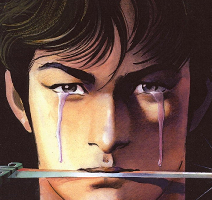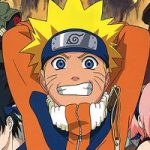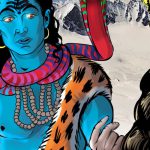Crying Freeman
Regions: Japan

Originally serialized in Big Comic Spirits (Shogakukan) from 1986 to 1988, Crying Freeman is another successful seinen (youth) manga collaboration between writer Kazuo Koike and Ryoichi Ikegami. Koike wrote the seminal Lone Wolf and Cub series in the 1970s which has been adapted into several blockbusters in Japan and heavily influenced Frank Miller’s original Daredevil run in the early 1980s and his Ronin deluxe series for DC. Ikegami started out in the avant garde Garo magazine in the 1960s and was an assistant to Shigeru Mizuki before going on to draw a Japanese version of Spider-Man, under licenced from Marvel in the early 1970s. He started collaborating with Koike soon after and just prior to Crying Freeman, both worked together on the Wounded Man series from 1983 to 1986.
Crying Freeman is a fantastical story of how a Japanese potter Yō Hinomura was kidnapped and brainwashed by a secret Chinese mafia group known as the 108 Dragons to be their top assassin. His moniker was the Crying Freeman as he would tear after every assassination as he was forced to kill and he desired to be free. He defied orders to kill Emu Hino, a Japanese artist who witnessed one of his missions. They escaped to Hong Kong, but eventually returned to the 108 Dragons to head the organization. It is filled with stylised action and somewhat gratuitous sex, most probably the first time North American readers encountered such adult material in translated manga in the late 1980s.
The importance of Crying Freeman in the history of translated manga in America is that it was the first series VIZ Communications put out on its own in 1988 after a year of collaboration with Eclipse Comics. It was a ‘safe’ series to publish as Ikegami’s realistic artwork and character designs were already familiar to North American readers who have read his Mai, the Psychic Girl, series VIZ and Eclipse Comics released in 1987. First Comics also started publishing their English edition of Lone Wolf and Cub in the same year, so the release of Crying Freeman by Koike and Ikegami was much anticipated by manga fans in America. Ikegami’s verisimilitude style, which is not the norm in Japanese manga, was deemed ‘acceptable’ to Western audience.
Crying Freeman was also popular in other parts of Asia like Singapore and Malaysia, and especially in Hong Kong. Ikegami was a big influence on the popular Hong Kong comic artist, Ma Wing Shing, whose character designs for his ground breaking martial arts series of the early 1980s, The Chinese Hero, were very much in the vein of Ikegami. Crying Freeman’s popularity in Hong Kong accounted for two Hong Kong movie adaptations made in the late 1980s. There was also a Canadian film adaptation produced in 1995.
Further Reading
- Brienza, Casey. 2016. Manga in America: Transnational Book Publishing and the Domestication of Japanese Comics. London: Bloomsbury.
- Gravett, Paul. 2004. Manga: Sixty Years of Japanese Manga. London: Laurence King.
- Schodt, Frederick L. 1983. Manga! Manga! The World of Japanese Comics. New York: Kodansha USA.


